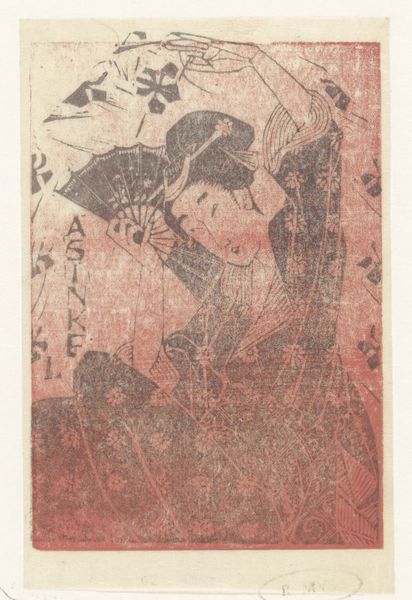
print, woodblock-print
#
portrait
# print
#
asian-art
#
ukiyo-e
#
figuration
#
woodblock-print
#
genre-painting
Dimensions: H. 24 1/16 in. (61.1 cm); W. 4 1/4 in. (10.8 cm)
Copyright: Public Domain
Editor: This lovely woodblock print, "Two Geisha," by Kikugawa Eizan, created sometime between 1787 and 1867, really captures my eye with its vertical format and the serene expressions of the figures. I’m curious, what symbols or cultural cues do you see within the composition? Curator: Well, immediately, I notice the geishas themselves act as powerful symbols. Geishas were much more than just entertainers. They were living embodiments of artistic skill, social grace, and refined cultural values. Look at the intricate hairstyles; even these bear significance, reflecting social status and adherence to aesthetic ideals. Their placement one above the other – consider the visual weight it creates. Editor: So, you're suggesting the placement adds a layer of symbolic depth beyond just being a practical compositional choice? Curator: Precisely! The mirroring might symbolize a kind of echo, the continuity of tradition, or even perhaps different aspects of a single ideal of femininity, presented to the male gaze in ukiyo-e prints. Also, note the chrysanthemums at the bottom - in Japanese culture they are symbolic of longevity and rejuvenation. The dark foliage offers a symbolic layer to both balance and contrast. How do these considerations enrich your appreciation? Editor: That’s fascinating! I hadn’t considered the positioning in that light. I focused more on the beauty of the printmaking itself. I see now how loaded each choice is with deeper cultural meanings. Thank you! Curator: It's in the visual language where history whispers to us across centuries; where symbols aren’t just decorations, but active agents of cultural memory. I'm glad we could reveal some together.
Comments
No comments
Be the first to comment and join the conversation on the ultimate creative platform.













